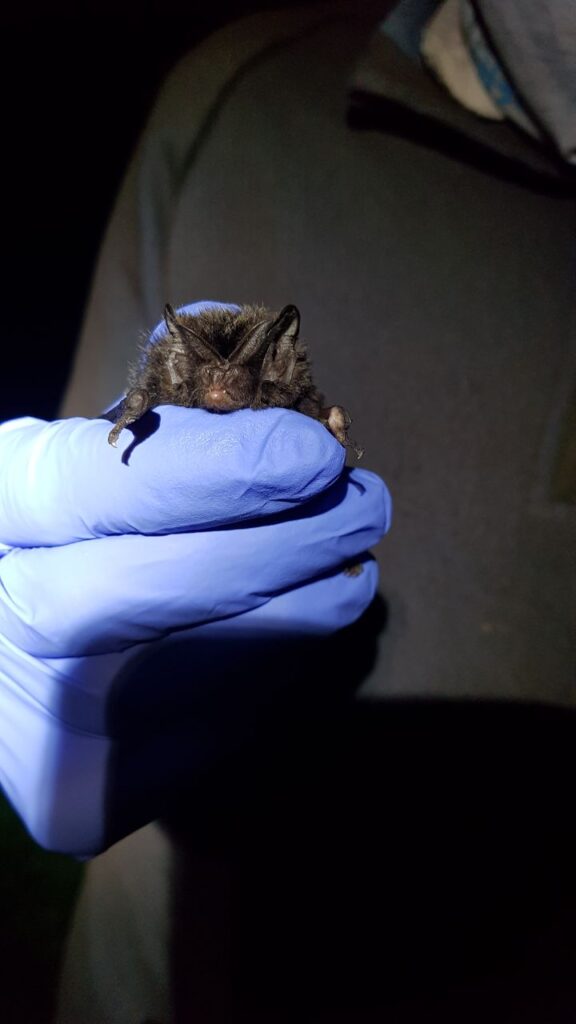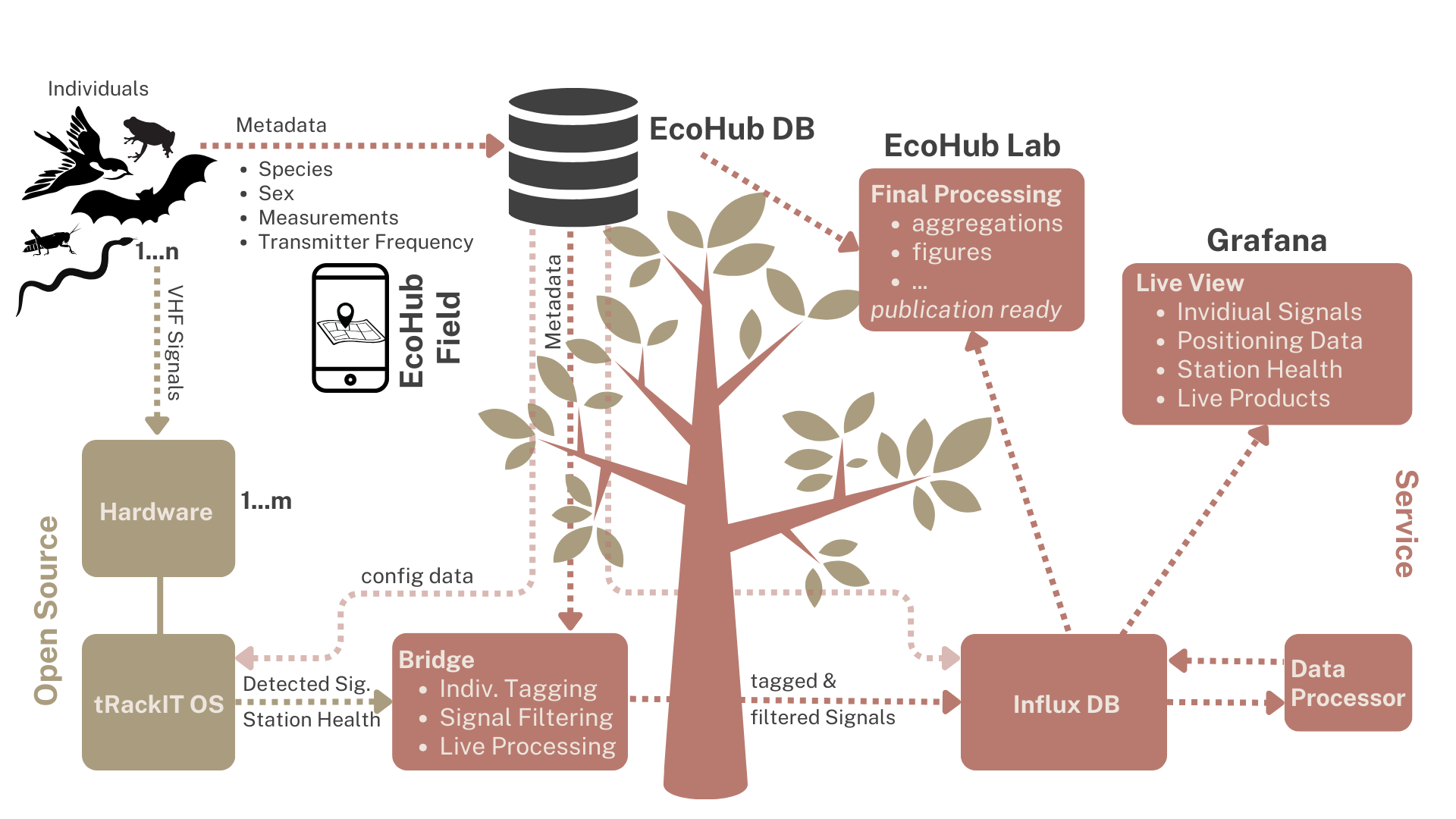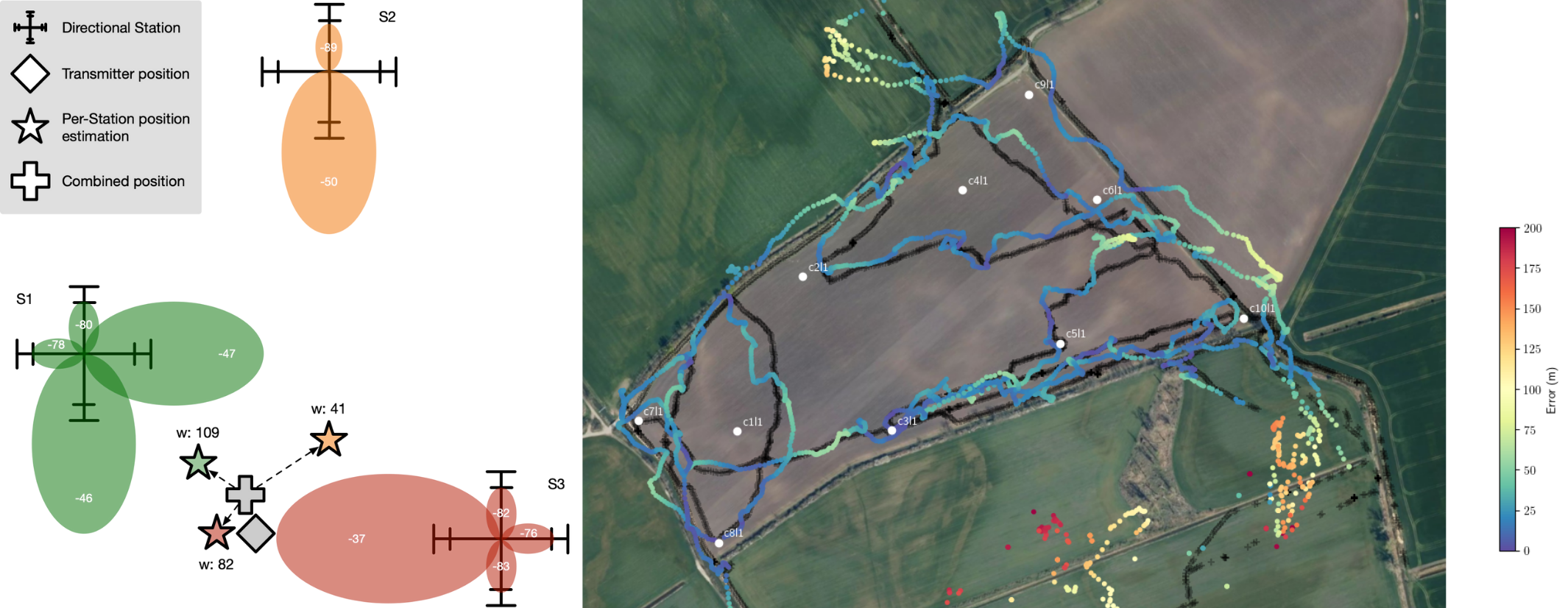Radio telemetry
Wildlife telemetry is a method of ecological research used to record and track wild animals using VHF transmitters. Wildlife telemetry can provide insights into the migration behavior of migratory animal species as well as their ecology and habitat preferences. This data is relevant for ecological research as well as the development and implementation of species and nature conservation measures. Fields of application for radio telemetry include, for example, planning processes such as wind turbines, road construction, nature conservation projects and research.
Manual radio telemetry
GPS transmitters are still too heavy for the majority of vertebrates worldwide. Since the 1960s, radio transmitters that send out a signal at regular intervals have therefore been used to record the spatial movements of small animals. Based on the signal strength, directional antennas can be used to determine the direction from which the signal is coming. By taking cross bearings from at least two locations, a rough location can be determined.
What exactly is the problem?
Manual radiotelemetry is labor-intensive and time-consuming, as at least two operators are required to track mobile animal species and only a few individuals can be recorded at the same time. At the same time, the data has poor spatial (high error) and temporal resolution (only a few data points per time unit) and there is a time lag between data collection and subsequent analysis.
Automatic radio telemetry
The trackIT system is the only automatic radio-telemetry system in the world that provides high-resolution position data in real time. The working time is reduced to the installation of the sensors (approx. 1 hour per unit), but enables the continuous recording of up to 60 individuals. Hundreds of thousands of observations can be recorded per individual with a temporal resolution < 2 seconds and an accuracy < 50 m, while the data, such as localizations, body temperature and activity index, are transmitted and evaluated in real time.
EcoHub
Your project - from sensor technology to data analysis
The tRackIT system consists of several components – the stations and the associated software as well as a cloud server backend for project data management and live data visualization. EcoHub is a cloud service for the management of wildlife data. The EcoHub database (DB) stores metadata on individual measurements, roosts, net catches, transmitters and more. The bridge component filters incoming signals, assigns them to the transmitters and individuals used and processes them further. Influx DB serves as a repository for time series data, while Grafana enables interactive live data visualization. EcoHub Lab offers post-season data processing for publication-ready images. Each customer receives an independently hosted cloud service. The trackIT system can be used for VHF transmitters from various manufacturers (Loten, HoloHill, Plecotus …).
- Hundreds of thousands of observations per individual
- Real-time positions, body temperature measurements or activity classifications.
- Simultaneous recording of >60 individuals
- Suitable for most animal species: birds, bats and other mammals (hamsters, hedgehogs, dormice ...), reptiles, insects
vhf-tracker:Omni - Presence/absence telemetry in intervention procedures
Activity recording
E.g. survival rates of chicks
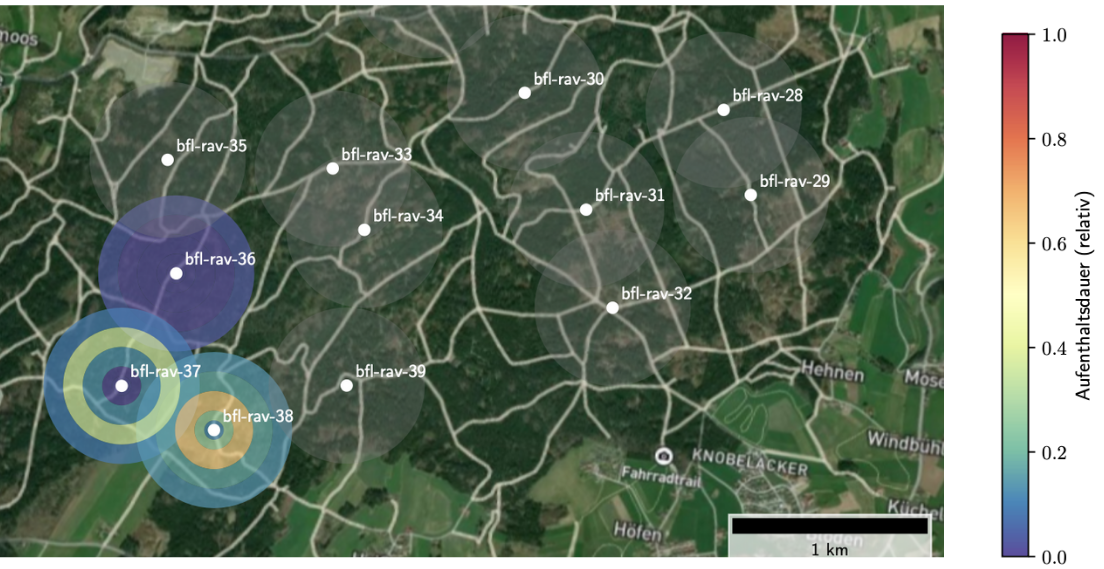
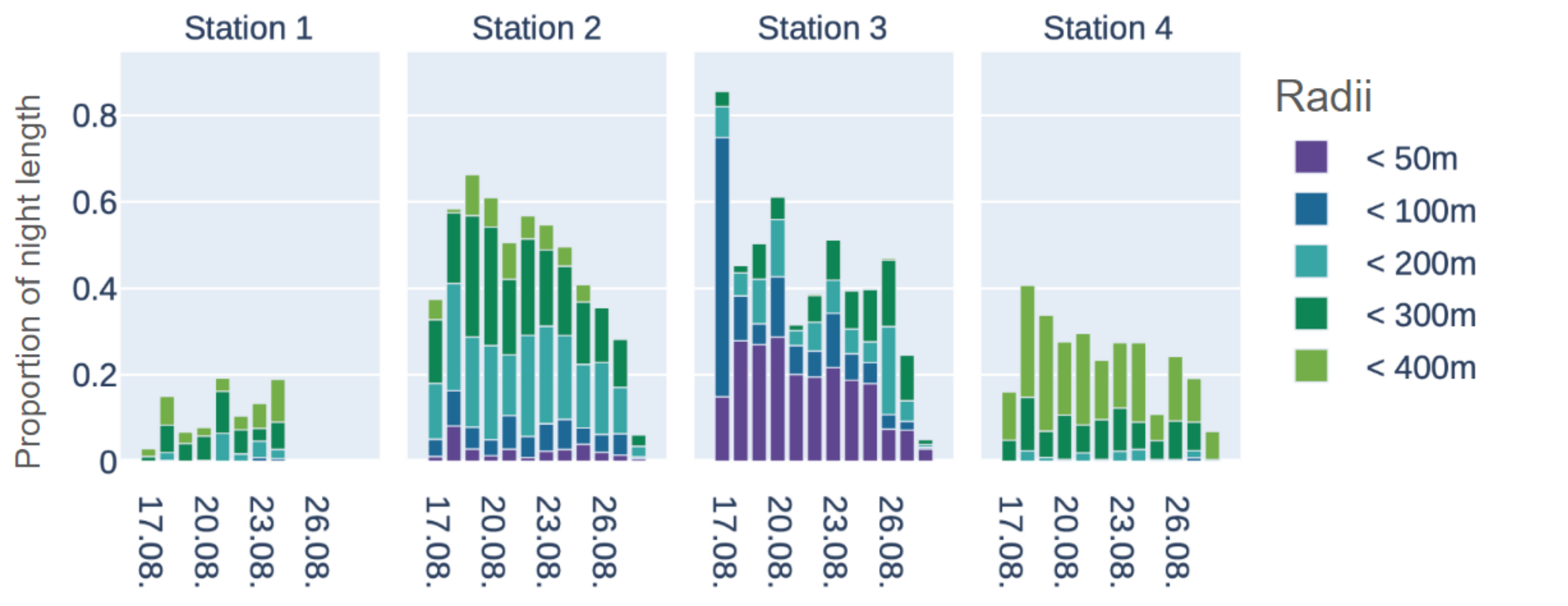
In USE
Recording of hunting areas for bats
For each intervention site, a graph is created for individual individuals as well as aggregated by species, showing the length of stay relative to the night length in different radii around the intervention site. This allows assessors to easily evaluate the suitability of the site.
Recording of neighborhood use
For each impact site, a graph is produced both for individual individuals and aggregated by species, showing roost use at various distances from the impact site. The graph shows the roost use of an individual at distances from three planned wind turbines (stations 1-3) over 4 days. A manual roost search was carried out on days 1 and 4 (diamond symbols show the actual distance of the roost found). The change of roost on day 3 to the 200m radius of station 4 was not detected.
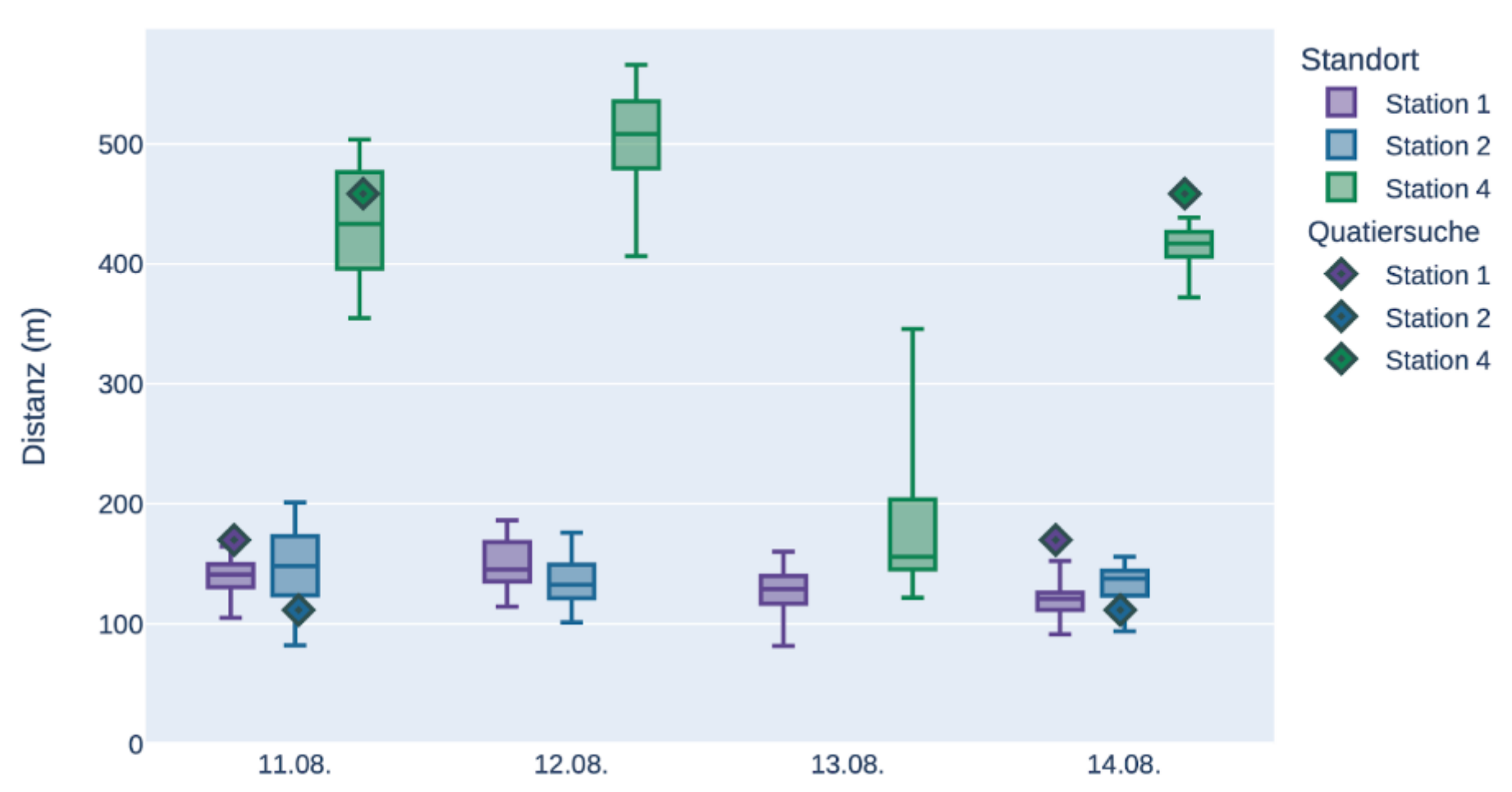
High-resolution positioning
30-50m accuracy
Recording of hunting grounds
Accurate and with high temporal resolution
Recording of train path queries
High-resolution determination of flight routes
Recording of roost use
Over the entire transmitter runtime
In real time
Tracking room movements from home or cell phone
Positioning with the vhf-tracker:Directional
Position telemetry enables a spatially and temporally precise resolution, for example when intervention sites are not yet known or other issues are to be investigated, such as the use of areas within maize fields in the example shown. The black dots are the GPS track of a test transmitter carried through a 2m corn field (transmitter row 1.5m in the vegetation). The blue and green dots represent the positions determined by the trackIT system and their errors.
In use
Recording of hunting grounds
The vhf-tracker:Directional consists of four Yagi antennas that are aligned in the cardinal directions. The position estimate per station is the signal strength weighted average of the antenna positions, and the combined positions are the signal strength weighted average of the position estimates of all stations. Quality metrics such as summed weighted averages, the number of stations and antennas used are also taken into account. Additionally, positions with less than three antennas and low weights are excluded, and a moving average over the coordinates is applied.
In figures
Our experience
The trackIT system has been developed and tested by the founders over the last 6 years, initially at the University of Marburg as part of the Nature 4.0 project and since 2023 in the company they founded. Since 2019, the founders have been accompanying its use in intervention procedures such as road construction or wind power processes and in research projects. Our customers and project partners range from planning offices to nature conservation associations (NABU, LBV) and authorities (NLWKN, HLNUG).
Automatic radio telemetry
tRackIT Systems’ technology can enable continuous monitoring and detection of wildlife in conservation projects. Our solutions offer automated radio telemetry and AI-powered methods for acoustic detection of birds, bats and amphibians to provide accurate data for infrastructure and conservation projects.
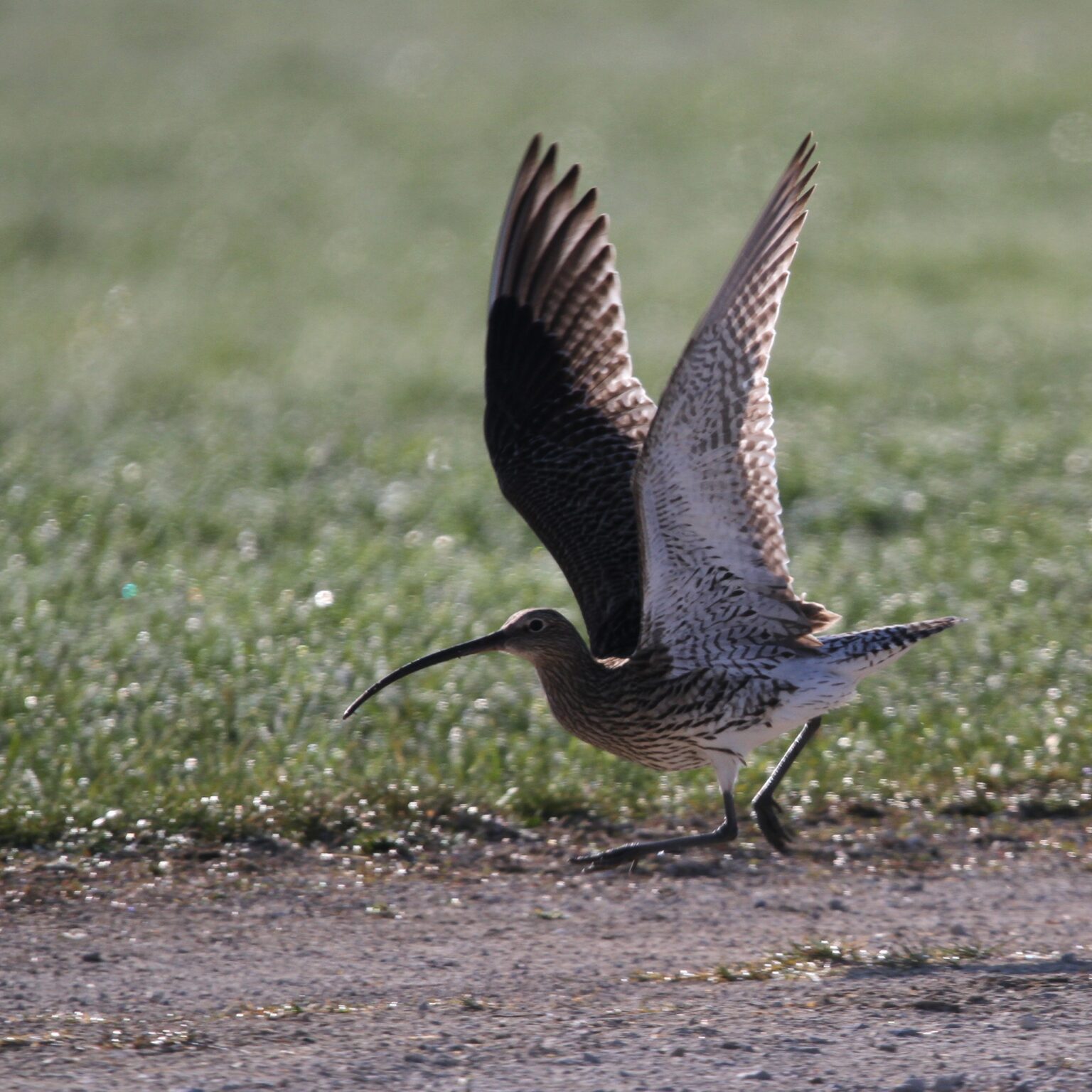
Nature conservation projects
To the projects
Intervention procedure
To the projects